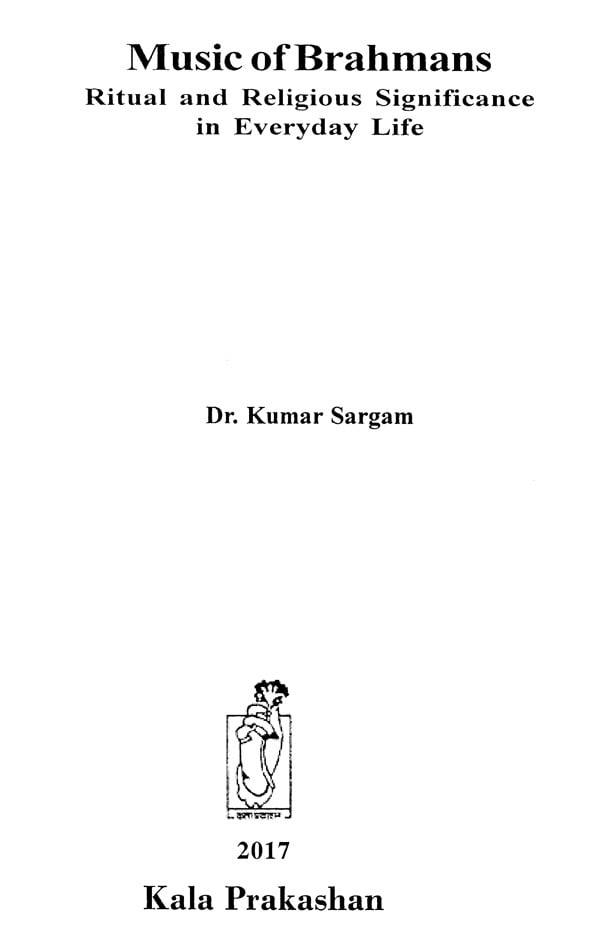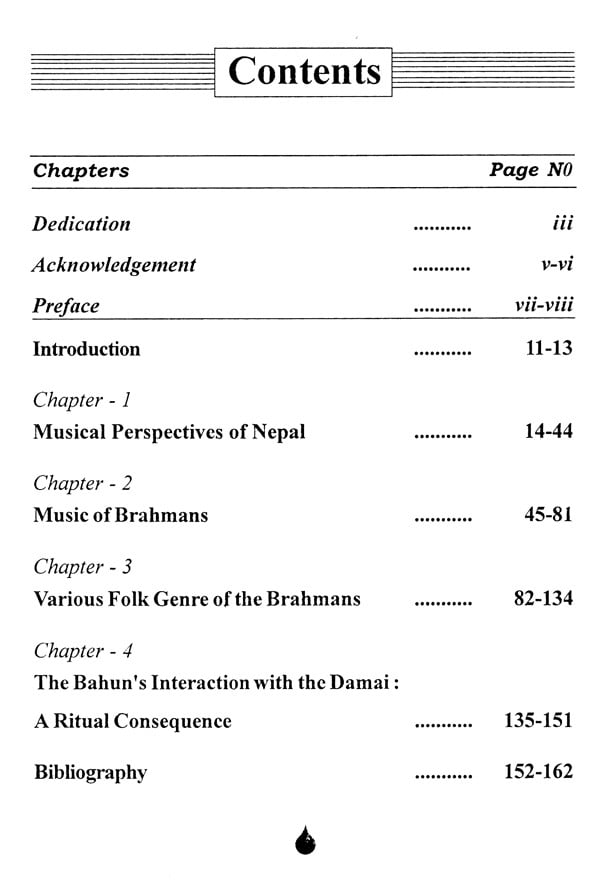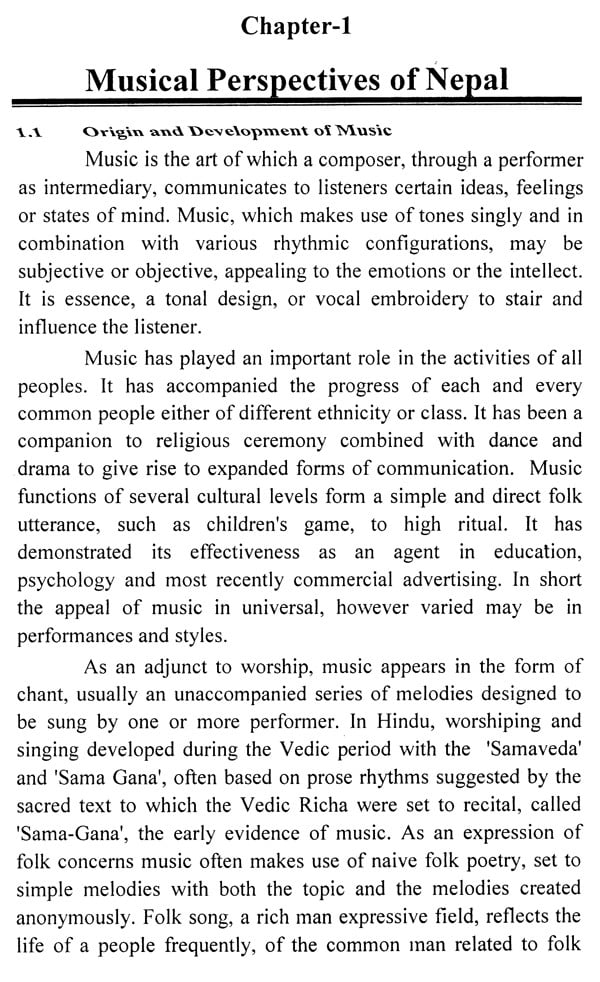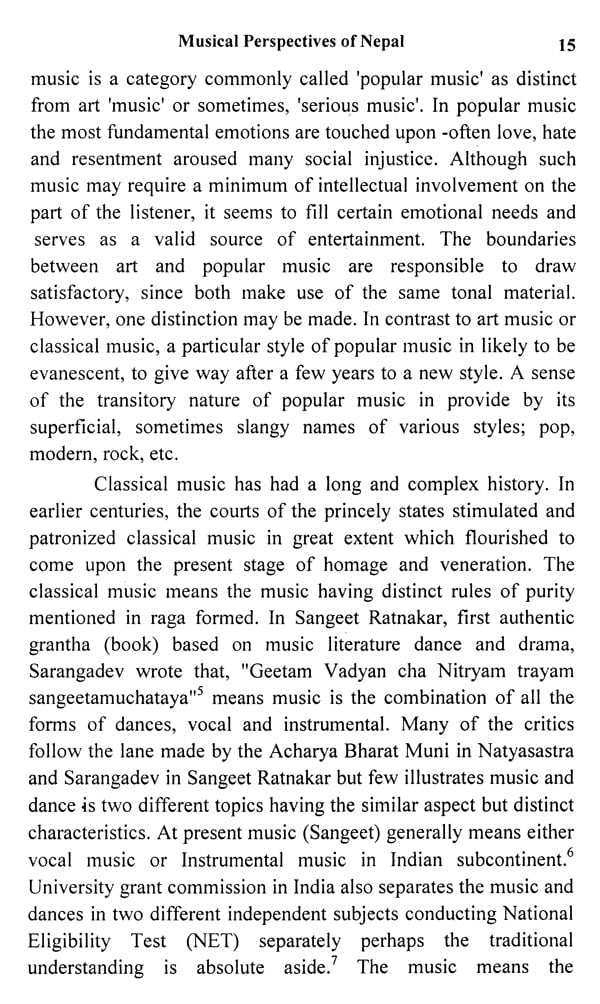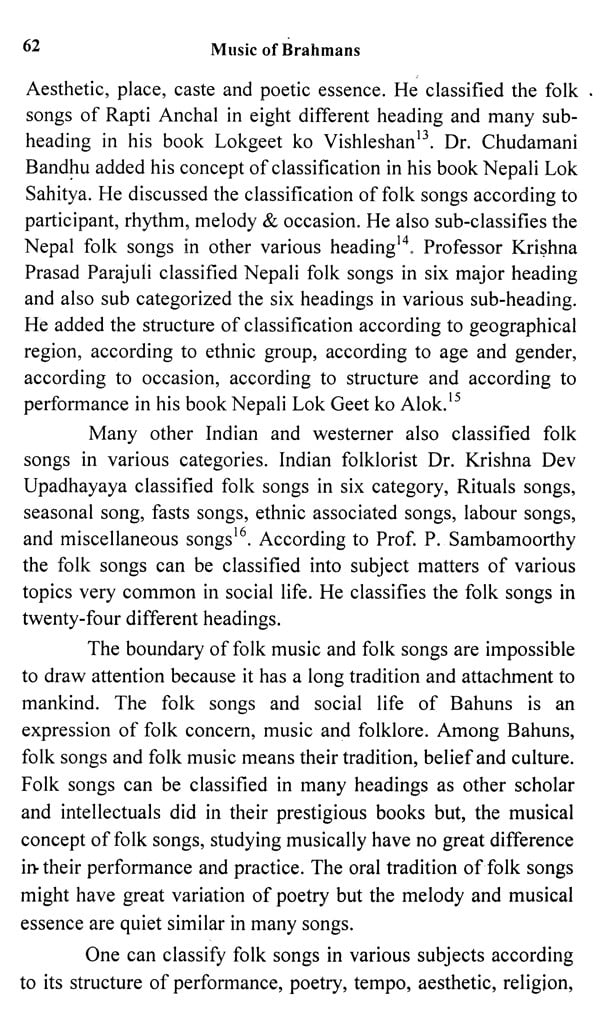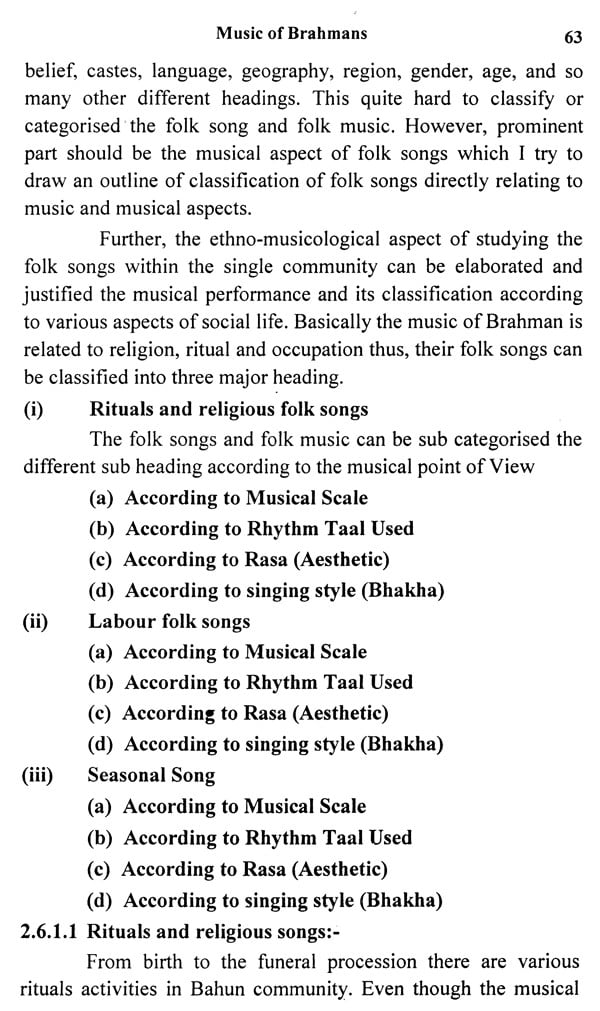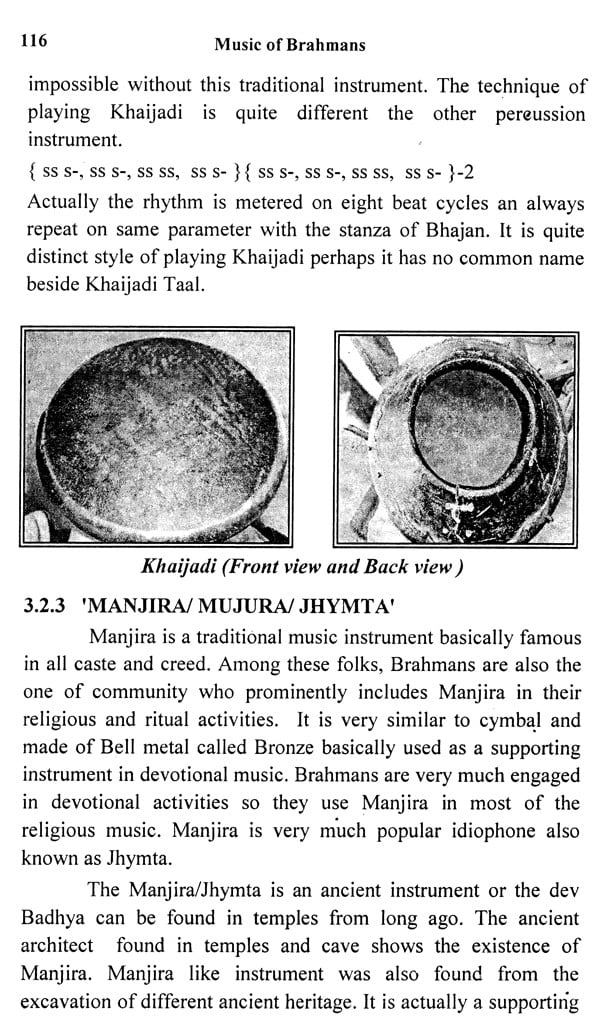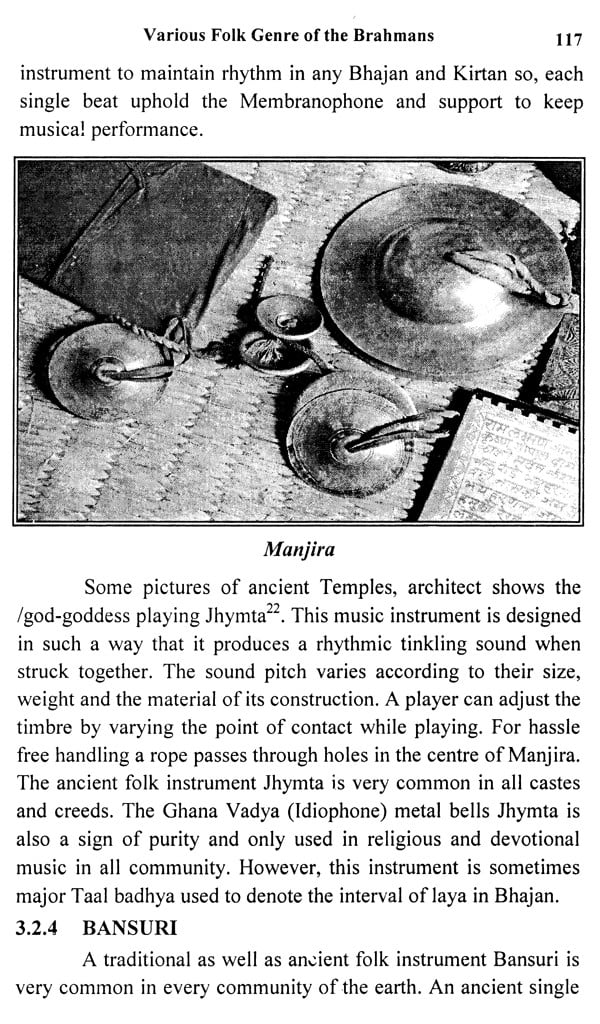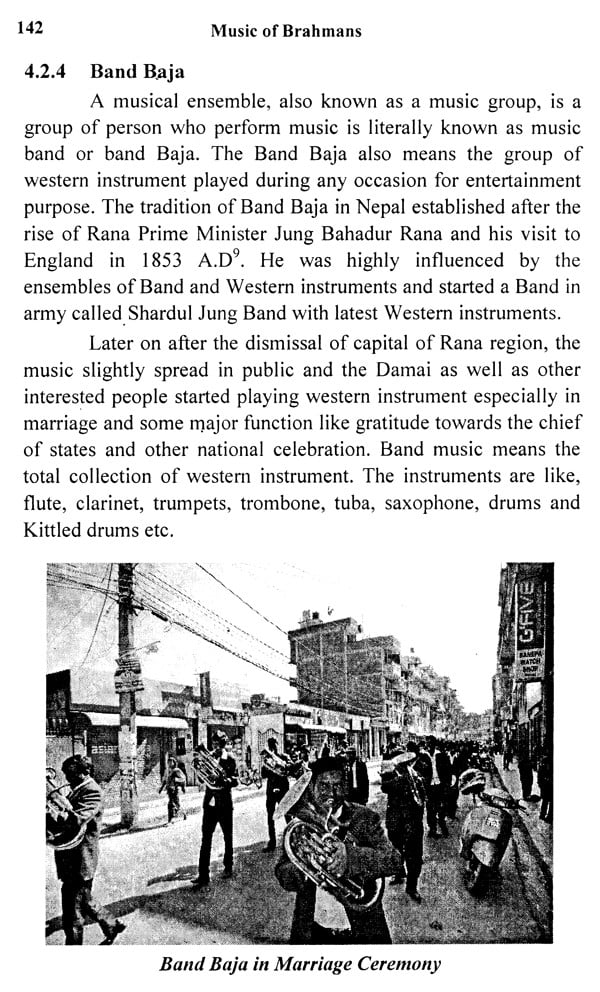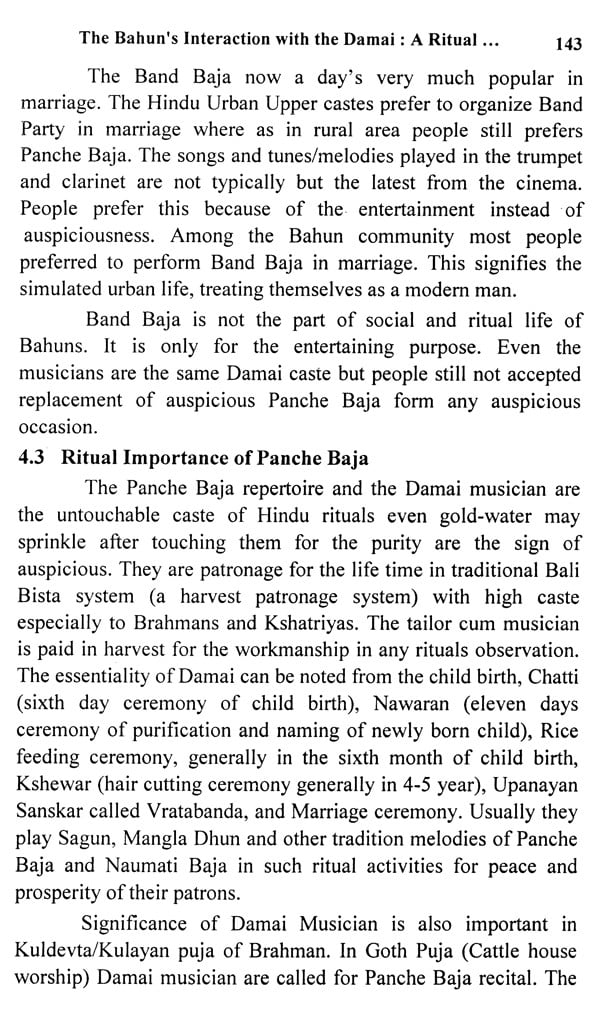
Music of Brahmans (Ritual and Religious Significance in Everyday Life)
Book Specification
| Item Code: | UAV333 |
| Author: | Kumar Sargam |
| Publisher: | KALA PRAKASHAN |
| Language: | English |
| Edition: | 2017 |
| ISBN: | 9789385309861 |
| Pages: | 162 (Throughout B/w Illustrations) |
| Cover: | HARDCOVER |
| Other Details | 9.00 X 6.00 inch |
| Weight | 340 gm |
Book Description
This book expose the foundation of the Brahmans music and traditional concepts associated with ritual and religious belief in primitive as well as in modern society. Nepali is a linguistic family rather than nationality; millions of people of Nepali Mother Tongue are the inhabitants of India, and Bhutan and Myanmar. It throw new light on the development of Hindus Music with ritual significant among Brahmans of Nepali origin who share same caste hierarchy to other Brahmans of north India and their origin perhaps belief from the same descendents of Indo-Aryan community. The book contains a rich repertoire of folk music and its lyrical beauty, caste system. their social values and traditional way of music making and patrons. The book also deals with the substantive work on the musical significance of caste musician in ritual and religious ceremonies among the Brahman's community.
The Author, Dr. Kumar Neupane 'Sargam' is a Young Classical Vocalist, a disciple of Eminent Guru Pt. Surendra Mohan Mishra, 'Mohan ji' of Banaras Gharana. He has completed M. Mus and NET-PhD from the Department of Vocal, Faculty of Performing Art, Banaras Hindu University, Varanasi. He is a music composer and lyricists considered as a emerging musicologist, He has co-authored a book, substantive work on research papers and published about a dozen articles in various Journals and magazines. He has also presented several research papers on National and International seminars, conferences and participated in national workshops on music and interdisciplinary subjects. He has also received Nehru Fellowship, Government of India.
Apart from Academic work, he has also worked as a music mentor, councillor and programme Judge in Indian Idol Academy, an official partner of Indian Idol Brand, Sony Television. Dr. Sargam has also worked as programme Judge for Big Magic in Uttar Pradesh. He is a dynamic personality in music research and academic work.
Folk music is usually defined as a traditional arts, literature knowledge, practices including traditional tales, myths, practices, proverbs, riddles, stories, etc; which has its origin through oral Tradition. Moreover, these customs are passed from one generation to another generation through oral tradition and there is no written records regarding the folk repertoire.
Study of the music within the margins; practices of folk repertoire, where the music has gone through series of development to the castes musicians, ritual and religious activities with the meaning of auspiciousness and blessing in everyday life of Bahuns. During the child hood, I often heard the folk songs which are sung in and around my surrounding. Somehow, although grew up in the rich cultural environment, I never paid any attention to the songs which soothed my ears every day.
In the beginning, I had no idea what I may discover but profound support from the folks, I try my best to presented real fragrance of folk music which revealed during fieldwork in remote countryside in Nepal, Sikkim and some Brahmans village of Uttar Pradesh and Bihar. Research trips were most pleasing experience of life: they made me realize the depth of the traditions and folk life and the process through which musical traditions are transmitted from one generation to the next generation. These experiences were additionally humbling to me as a music researcher, when I recognized the high level of skill among village musicians and their sensitivity towards musical rendering of utmost brilliance, nurtured by a listen, participate and learn oral tradition.
The term music is used all over the world to refer to vocal and instrumental performing arts, often accompanied by dancing. Music is a form of art that involves sounds and silence. It is normally expressed in the term of pitch, rhythm and the quality of sound. Music may also involve complex generative forms in time through the construction of Patterns and combinations of natural stimuli, principally sound, may be used for artistic or aesthetic communication, entertainment or ceremonial purpose. It is a natural phenomenon, which is beyond the scrutiny of materialistic eyes and views of historians or even the mighty musicians who cultivate the original "Nada' in different modes to present a musical events. Music is personal response since the same piece of music will affect people differently.
In the historic text "Sangeet Ratnakar" according to Sarangadev "Geetam Vadhyam cha Nrityam Trayam Sangeeta mucchayate Nrityam vadayanugama proktam vadayam geetanuwarcheecha" "Singing, playing an instrument and dancing are closely related to each other and form the core of Indian Classical Music."
The music of Nepal is closely related to its geographical location between India and China. Historically, culturally and linguistically Nepal has been the meeting point between the civilization of the Tibetan plateau and the plains of the Indian subcontinent. While the people of the mountains are highly influenced by Tibetan-Chinese culture, but the people hills and plains are more influenced by Indian culture due to the easy access and cultural similarities between two regions. There were so many princely states who shares similar language, religion, culture and lifestyle in Uttar Pradesh, Bihar and Nepal before forming the present political Map. These all are part of bharat varsh since from the civilization where, Hindi, Nepali, Bhojpuri, Awadhi, Kannaugi, Pahari, and so many other languages developed and flourished to its great extent, Veda, Purana, Upanishada Ramayana and Mahabharata were intuitive, Kashi Kailash, Lumbini- Bodh Gaya, Ayodhya- Janakpur, Vrindavan Haridwar are sacred places to worship, Ram- Sita, Radha Krishna, Shiv- Parvati, are adorable in great extent and Vishwanath-Pashupatinath are the protector, Brahma- Vishnu Mahesh are the creator, preserver and destroyer of the mankind. Thus, when we look forward to musical history in Nepal, we have to refer to the Indian subcontinent music history as well as Tibeto Chinese Musical history. The coherent and symbiotic principle of folk-expression is the re-vamping, recharging and rejuvenating sensitivity of societal knitting everyday life. The harvest and festivals of indigenous culture in Nepal are best examples of 'wellness mantras' the spirit of general weal is very intricately woven in the social fabric between the cultural diversity of Hills, Himalayas and Plains. The Aryan and other Hindu tribes are supposed to come to Nepal through India and the Mongols and other Tibeto Barman groups are supposed to come from Tibet or somewhere else from East Asia. The Hindu Aryans are the extended form of Indus valley and Ganges civilization settled in Nepal in different stage.
**Contents and Sample Pages**
